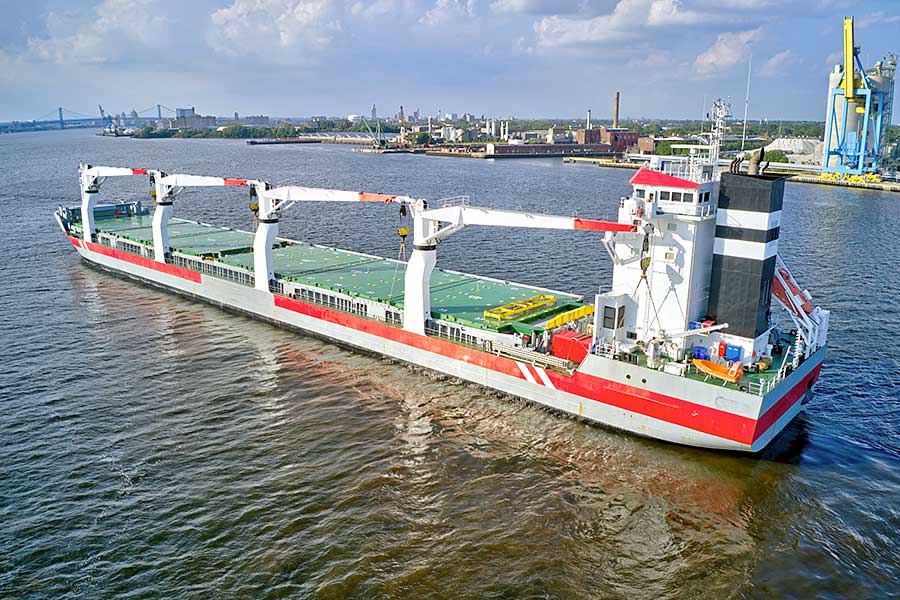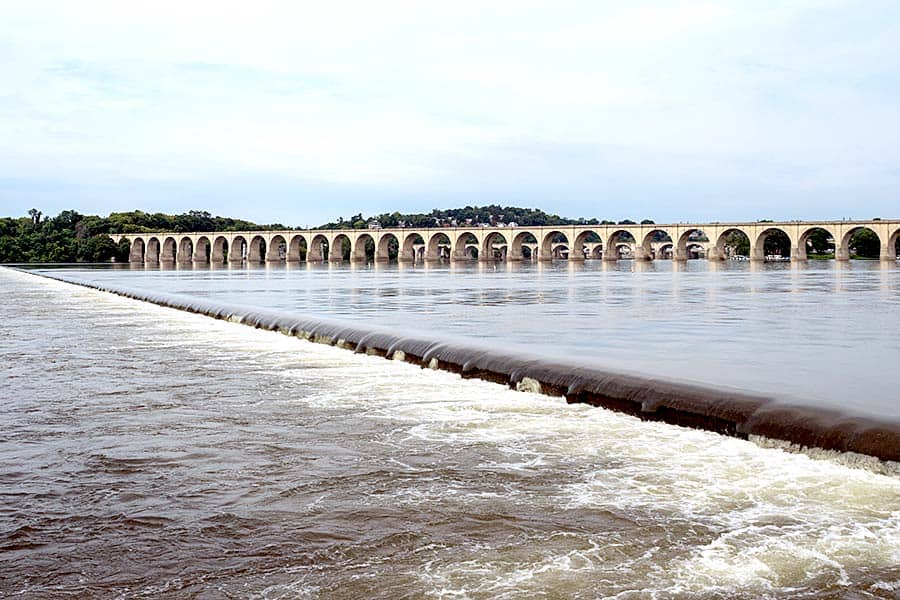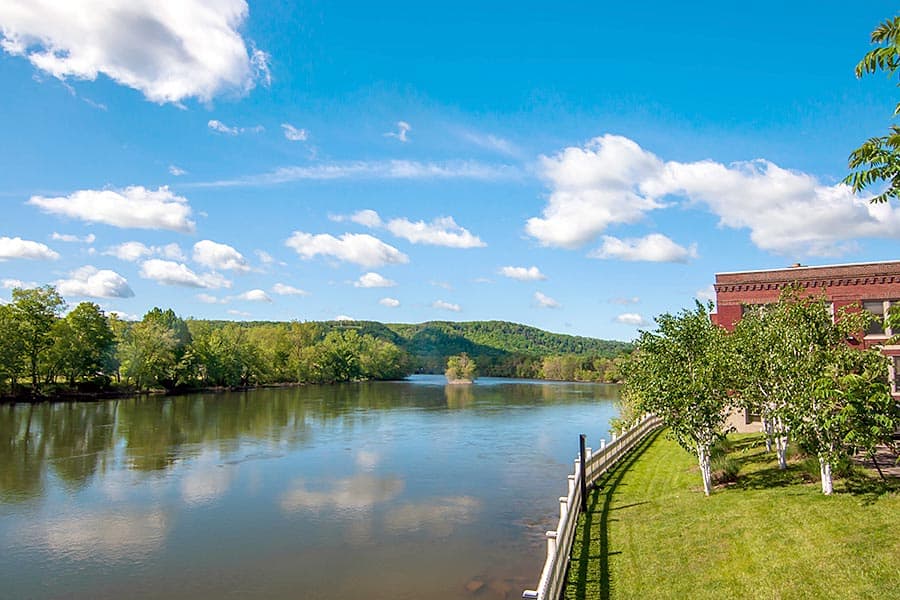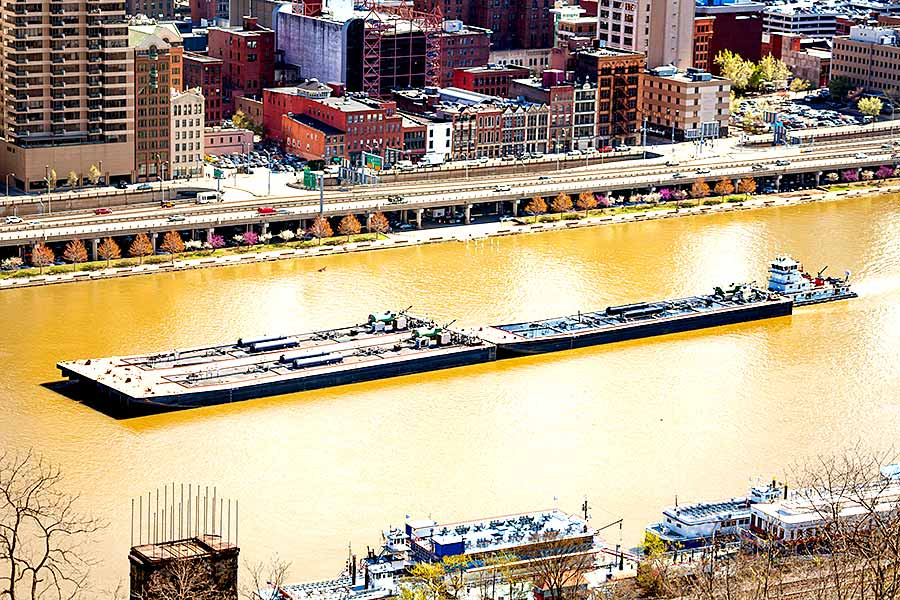
Pennsylvania is full of natural beauty, with lush forests and rolling hills providing stunning views. But one feature stands out in particular: the rivers. These waterways are integral to life in The Keystone State, from the mighty Susquehanna to the smaller streams that meander through valleys and across fields.
In this post, we’ll look at some of Pennsylvania’s major rivers and explore why they’re so important for residents here. So let’s dive in – what are the major rivers in Pennsylvania?
1. Delaware River
This impressive river stretches approximately 330 miles and flows through four states (New York, Pennsylvania, New Jersey, and Delaware) in the eastern United States. The Delaware River Basin is home to approximately 8 million people and is the primary source of drinking water for Philadelphia and other communities in the region.

It serves 14.2 million people with water, and that includes 7 million residents of New York City and northern New Jersey who don’t live in the watershed. Along with being a vital resource for drinking water, it is home to hundreds of species of fish, birds, and other wildlife.
This waterway is an important part of the history of the United States, with Native American tribes relying on its waters for centuries. In addition to its historical significance, it played a crucial role during the American Revolution and was an important transportation route for goods and supplies.
Today, the Delaware River is a popular destination for nature lovers, anglers, kayakers, and other outdoor enthusiasts. So whether you are looking for a tranquil paddle down it or want to cast a line and catch some fish, there is something for everyone along this impressive waterway.
Overall, the Delaware River is a true treasure of the eastern United States, providing abundant natural resources, recreational opportunities, and historical significance to the millions of people who call the region home.
2. Susquehanna River
Nestled in the heart of the Northeastern United States, the Susquehanna River is a natural wonder that both captivates and inspires locals and tourists alike. Its winding 444-mile path touches parts of Pennsylvania, New York, and Maryland, making it one of the longest and most significant rivers in the eastern part of the United States.

The Susquehanna is much more than just an impressive body of water. It is a critical part of the region’s ecosystem, providing a vital habitat for aquatic life, including several endangered species. This waterway also serves as the primary source of drinking water for millions of people in the surrounding communities, making its protection and preservation even more critical.
Beyond its ecological importance, the Susquehanna River has played a crucial role in shaping the history of the United States, serving as transportation, trade, and communication pathways for Native Americans, early settlers, and the nation.
Keystone Answers Fun Fact: The Monongahela River flows northeasterly out of north central West Virginia across the Pennsylvania border to continue northerly across southwestern PA to Pittsburgh.
3. Ohio River
Nestled in the heart of America, the Ohio River winds its way through six states, providing life-giving water to millions along its banks. But this mighty river is more than just a source of hydration – it’s a vital part of our nation’s history, culture, and economy.

Did you know that the Ohio River is a major tributary of the Mississippi River? It stretches over 981 miles long, and its expansive watershed covers over 200,000 square miles. This waterway is home to over 150 species of fish, making it a popular destination for fishing enthusiasts.
But the Ohio River is much more than just a recreational resource. It has been a significant transportation artery for hundreds of years, linking America’s heartland to major ports in the Gulf of Mexico and the Atlantic Ocean. As a result, it has played a significant role in the growth of industry and commerce, enabling farmers and manufacturers to transport their goods across long distances much more efficiently.
Moreover, the Ohio River has played an essential role in our nation’s infrastructure, powering countless hydroelectric dams and providing water for agriculture, manufacturing, and other vital industries. And let’s not forget the river’s role in shaping American culture; it has inspired countless songs, poems, and stories throughout the years.
Indeed, the Ohio River is much more than just a physical feature on a map. It’s a testament to the resilience and ingenuity of the American people – a symbol of our country’s past, present, and future.
4. Allegheny River
Nestled in the heart of Western Pennsylvania lies the Allegheny River, a stunning waterway that spans over 325 miles and boasts some of the most breathtaking scenery in the United States. Flowing northward from its origin in Potter County, it passes through the Allegheny Plateau, carving a path through some of the most rugged and beautiful terrains on the East Coast.

But the Allegheny is much more than just a pretty face. It provides a vital lifeline for both humans and wildlife alike, and the river is a critical source of freshwater for countless communities across Pennsylvania and beyond. In addition to supporting a diverse range of aquatic species and plant life, the Allegheny has also played an important role in the region’s history, serving as a key transportation artery for settlers and traders in the 18th and 19th centuries.

Today, it plays an essential role in the lives of countless people in Pennsylvania and beyond. From fishing and boating to hiking and birdwatching, it offers many recreational opportunities that draw visitors from far and wide. And with its unparalleled beauty and rich cultural heritage, it’s no wonder that the Allegheny is considered one of the most beloved and iconic waterways in the United States.
5. Monongahela River
The Monongahela River, known locally as the Mon, is located in the northeastern United States and is a breathtaking natural wonder that flows approximately 128 miles through Pennsylvania and West Virginia. Its name is derived from the native Lenape people’s word ‘Monongahela,’ which translates to mean ‘falling banks.’

The Mon plays a crucial role in the local environment and economy in the Appalachian Mountains. It is home to over 70 species of fish, including walleye, bass, and catfish, making it a popular fishing destination.
This river’s rich history dates back to the early days of America’s industrialization when it was a major shipping route for coal, iron, and steel. But today, it has found a new purpose as a vital part of the region’s recreational and tourism industry.
Additionally, it is an important transportation route, as many barges and ships carry coal, oil, and other goods on its waters.
Aside from its practical uses, the Mon is also a beautiful sight to behold. Its deep, green waters snake through the surrounding landscape’s lush forests and rolling hills. As a result, visitors can find stunning hiking trails, picnic areas, and scenic overlooks along its banks.
Its clean, clear waters and abundant wildlife provide a vital habitat for countless species and support the health and well-being of the people who live and work along its banks.
Overall, the Monongahela River is an important natural resource for the local community and visitors alike. Its impact on the region goes far beyond just its appearance and recreational use, making it a crucially essential part of the northeastern landscape.
Make a Splash
In conclusion, Pennsylvania is rich in natural beauty and resources, and its rivers are no exception. From the mighty Susquehanna to the tranquil Delaware, these waterways have played a critical role in the state’s history, economy, and culture.
Whether you enjoy fishing, boating, or simply admiring the scenery, there is something for everyone along Pennsylvania’s major rivers. So next time you’re in the Keystone State, be sure to take some time to explore these remarkable waterways and experience their many wonders for yourself. Who knows, you might just discover a new favorite spot to call your own.






